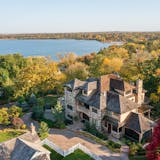There's a party happening on the third floor of the Minnesota History Center in St. Paul. The room is filled with 22 extraordinary women, and everyone is invited — just mask up and show up.
Spoiler alert: These Minnesota ladies, while life-size, are cutouts. Their stories, told through text, black-and-white photographs, rendered drawings and other memorabilia, make up the exhibition "Extraordinary Women."
The honorees range from 19th-century abolitionist Emily Goodridge Grey to more recent heroes such as Debbie Montgomery, who became the St. Paul Police Department's first female officer in 1975. (There's a street named after her in the Rondo neighborhood, where she grew up.)
Bright yellow signage introduces viewers to each of the ladies in this exhibit, which originally came out of a show about the suffragist movement. Produced in partnership with the League of Women Voters of Minnesota, it was supposed to open last fall and feature 43 women, but because of pandemic closings, the number was cut and spacing between each display has been increased.
"These were very ordinary women in many ways, who looked around and used the assets at hand to do extraordinary things," said senior exhibition developer Kate Roberts. "We looked at women's activism in general, stories of hope, and inspiration."
• American Indian Movement co-founder Pat Bellanger — Nokomis, to her family — fought for treaty rights.
• Minnesota Freedom Rider Claire O'Connor, a white woman, joined the struggle to destroy segregation laws.
• Nellie Griswold Francis wrote and helped pass an anti-lynching law after the 1920 lynching in Duluth of three Black men wrongfully accused of raping a white woman.



